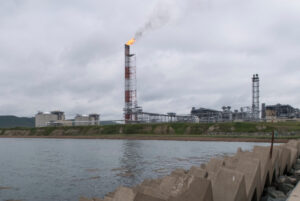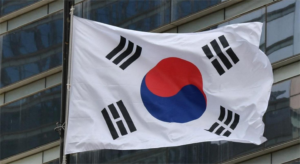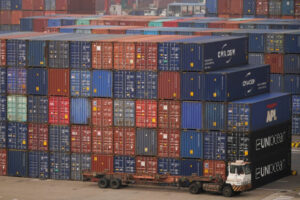Menu
Red Sea Turmoil: A Ripple Effect on China’s Export Economy
- Junnel G
- January 19, 2024
- 6:49 pm
A Surge in Shipping Costs and Delays
The recent disruptions in Red Sea freight have cast a long shadow over the Chinese export sector, significantly impacting businesses reliant on this crucial trade route. Businessman Han Changming, who trades between China, Europe, and Africa, has seen shipping costs more than double, from $3,000 to roughly $7,000 per container, a change that has obliterated his company’s narrow profit margins. These increased costs, coupled with higher insurance premiums, underscore the fragility of China’s export-driven economy in the face of global supply chain disruptions and external demand shocks.
Global Supply Chains in Jeopardy
The situation is so dire that some companies are rethinking their reliance on Chinese manufacturing, opting instead for factories in countries like Turkey and Vietnam. This trend of “near-shoring” is gaining momentum as firms look to mitigate risks and reduce dependency on China amidst the ongoing geopolitical tensions. The potential permanence of these disruptions threatens to reshape global supply chains significantly, prompting companies to reassess their production and sourcing strategies.
China’s Economic Strain and the Ripple Effect
The upheaval in the Red Sea is compounding the already existing challenges faced by the Chinese economy, including a real estate crisis, weakened consumer demand, a shrinking population, and sluggish global growth. For businesses like Han’s, the trade with Europe and Africa, which constitutes 40% of their operations, is under severe strain. Companies are pleading with suppliers and customers to absorb some of the additional costs to remain viable. Moreover, the timing coincides with the logistical hurdles of the Lunar New Year, when a significant portion of the workforce goes on leave, intensifying the rush to ship goods beforehand.
The Domino Effect on Supply Chains
Larger manufacturers are particularly worried about the cascading impact on smaller suppliers operating on thin margins. The rerouting of vessels from the Red Sea to longer routes like the Cape of Good Hope not only extends shipping schedules but also tightens global container capacity, leading to delays and shortages at major ports like Ningbo-Zhoushan. This strain is already manifesting in reduced orders, as seen with Yang Bingben’s industrial valve company, where clients are drastically cutting back orders due to the increased freight costs.
The Increasingly Precarious Balance
The disruptions are testing the resilience of China’s export sector, which operates on slim margins and volume-driven profit models. As payment delays and shipping uncertainties become more common, factories are facing a cash flow crunch, unable to pay suppliers or workers. The precarious balance that has long underpinned China’s dominance in the global market is showing signs of faltering, raising concerns about the sustainability of businesses and the broader economic implications for the country.
As China navigates these turbulent waters, the reverberations of the Red Sea disruptions are being felt far and wide, casting a spotlight on the intricate interdependencies of global trade and the need for adaptable and resilient supply chain strategies.
#Top Tags COVID Covid-19 Technology Finance Investing Sustainability Economy

Subscribe to Our Newsletter and get a free pdf:




















Comments are closed for this article!